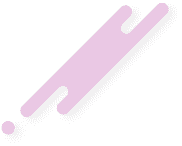If you’ve been learning about website design and website management, you’ll know that a content management system (CMS) allows you to effectively manage your site’s content. You might not know, however, that there are several different types of CMS.
The two main types of CMS are traditional and headless CMS. Both headless and traditional CMS have their positives and negatives and will vary in suitability depending on the architecture of your website, your content goals, and your technical ability.
Here at Outible, we love helping people to understand how web design works, sharing our knowledge to give our customers, and anyone else in need, a helping hand with web design.
Let’s go through the pros and cons of traditional CMS and headless CMS to get you up to speed.
Traditional CMS
In short, traditional CMS is for those who want to start a website quickly and simply. Traditional CMS was developed with the goal of combining CMS and website design, meaning that everything is connected and requires less technical know-how. Adding and updating content in the past without traditional CMS meant lots of manual tasks, like updating pages via HTML.
WordPress and Drupal are good examples of traditional CMS. They neatly connect the front-end and back-end of your website, containing everything from the content database to the layer of webpage presentation. It’s most suited to personal sites and blogs, or organisations who don’t have a developer team.
Even if an organisation does have a developer team, the content creators themselves may still like to use traditional CMS because it means they don’t have to rely on the developers for help all the time.
Pros of Traditional CMS
It’s a single, easy-to-use system
Lower technical knowledge needed
Manages all web content
Themes and templates for quick design
Extensive support network
Cons of Traditional CMS
Only suitable for web content
Limited choices in design
There can be issues with scaling
Headless CMS
Headless CMS is different from traditional CMS in that it doesn’t connect to the front-end (graphical user interface) of a website at all – it’s all about the content.
Headless CMS uses an application programming interface to publish the content, which means that it’s separate to other areas of your site. The main benefit of this is that you can publish your content in many different ways with complete control, allowing you to achieve web design that is unique and personal, and which stands out from the crowd. But this level of control isn’t always suitable for people who only want a simple package to publish their content.
Most big organisations will be using headless CMS, and so they’ll also have a dedicated front-end development team to create large-scale websites that are completely unique.
In our experience, most small organisations also use headless CMS. The concept of having a site that is one of a kind and free to control is something that is very important to businesses no matter their size. These smaller organisations get around the fact that headless CMS can be difficult to use by hiring web design Liverpool Agency on an ad hoc basis.
If you’ve also had problems with how your content is displayed on mobiles and other devices, you won’t have that with headless CMS, due to the fact that content on traditional CMS is designed especially for the web.
Pros of Headless CMS
Make websites that are unique
Your content will be suitable for any device
Freedom for developers to use preferred framework and tools
Focus on creating professional-standard content
Cons of Headless CMS
More technical knowledge needed to use personally
Upfront configuration and integration
Which one to choose?
To summarise, traditional CMS is probably best for personal blogs and websites, or for very small organisations. It’s easy to use and doesn’t require much technical knowledge, and you can use it to create a site in only a couple of hours.
For organisations that want something more unique, along with the option of improved functionality, headless CMS is always better. Headless CMS is also vital if your mobile or television apps need to be developed with the same content as the website app. If you’re not very technically minded, it’s best to hire professionals to sort out the headless CMS for your site.
Our Preferences
As web design experts, we use headless CMS because we have the skills and expertise to do so. Most of our customers come to us because they are seeking a unique website for their business that will make them stand out from the crowd – we achieve this by using headless CMS.
With headless CMS, we enjoy the creativity afforded to us as web design specialists. We take pride in knowing that our web creations are out there in the digital world, a combination of your design instructions and our own flair. Most of all, we’re gratified to know that we’ve helped your business on its journey to becoming a success.
Here at Outible, we also do something a little bit extra. We combine headless CMS with something called GatsbyJs – a front-end framework that uses strong pre-configuration for faster page loading, code splitting, asset optimisation, data prefetching, and server-side rendering.
In simple language, this means your website gets huge performance and security benefits, as the content is created at the build time of the website. Not all web design agencies do this. It takes a bit more work, but we do it simply because we’ve achieved great results for our customers.
Get In Touch
We hope we’ve provided some helpful knowledge about traditional and headless CMS. If you have questions, or if you’re interested in working with us, get in touch with our team now. We’ll talk you through what we offer and what we can do for your business. In the meantime, check out some of our previous work and read our testimonials. We’re looking forward to hearing from you.


